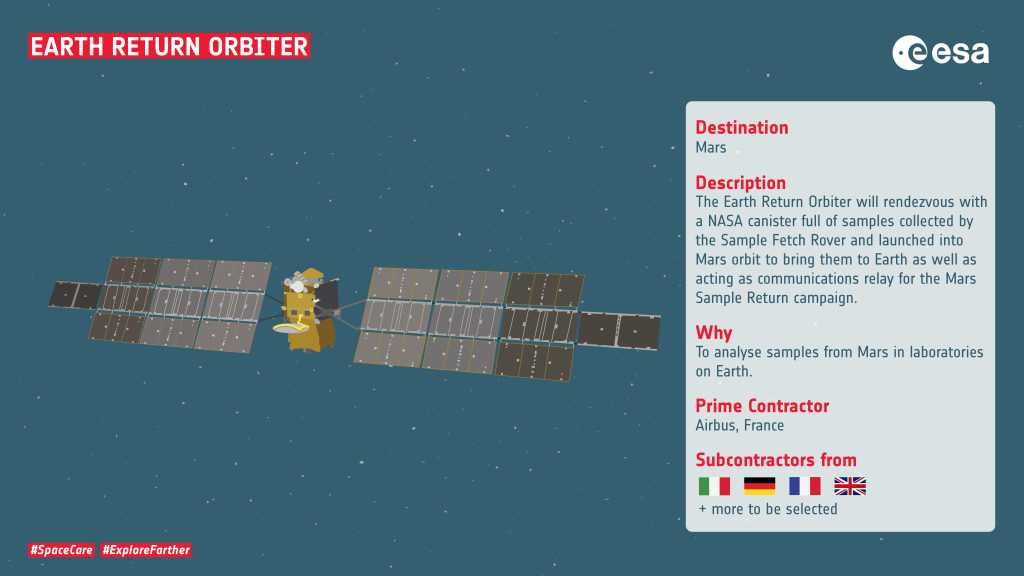The award brings the Mars Sample Return programme a step closer to the first robotic round-trip to the Red Planet. There, NASA’s Perseverance rover is busy collecting rock, geologic and atmospheric samples.
“This little and mighty rocket is a vital piece of the jigsaw for the Mars Sample return campaign,” says David Parker, ESA’s Director of Human and Robotic Exploration. The current architecture envisions a three-mission campaign to return samples from Mars.
“The Mars Ascent Vehicle will connect three key European elements: the rover that will pick up the samples left by Perseverance, the robotic arm that will transfer them to a container, and the orbiter that will catch the precious cargo from the martian orbit,” explains David.
ESA is building the Sample Fetch Rover (SFR), the Sample Transfer Arm (STA) and the Earth Return Orbiter (ERO). ERO will be the first interplanetary spacecraft to make a return trip from Earth to Mars and back. The orbiter is outfitted with NASA’s Capture, Containment, and Return System payload. The spacecraft would bring the samples to Earth safely in the early- to mid-2030s.
“NASA’s collaboration with the European Space Agency will inspire the world when the first robotic round-trip mission retrieves a sample from another planet – a significant step that will ultimately help send the first astronauts to Mars,” NASA Administrator Bill Nelson said.
Lockheed Martin Space will provide multiple MAV test units and a flight unit. Work under the contract includes designing, developing, testing, and evaluating the integrated MAV system, and designing and developing of the rocket’s ground support equipment.
“I am pleased to see the next part of our historic collaboration on Mars Sample Return get underway. The excitement is building!” adds David.
Once on Earth, the first samples from another planet will be studied by state-of-the-art tools by the eager science community. NASA and ESA have selected a number of European scientists to advise on the sample selection for return.
“The Sample Fetch Rover will build on the expertise developed in Europe in the ExoMars programme with the Rosalind Franklin rover, which launches to Mars in September 2022,” says the lead of ESA’s Mars exploration group, Francois Spoto.
“The Earth Return Orbiter draws on our heritage of launching the BepiColombo mission to Mercury and the ExoMars Trace Gas Orbiter (TGO).”
The Trace Gas Orbiter is relaying the majority of data from NASA’s Perseverance, Curiosity and Insight missions while also investigating the atmosphere and subsurface of the Red Planet from orbit. It recently spotted significant amounts of water at the heart of Mars’ dramatic canyon system, Valles Marineris.
Mars Sample Return (MSR) will revolutionise our understanding of Mars by returning scientifically-selected samples for study using the most sophisticated instruments around the world. The mission is a cornerstone of ESA’s Terrae Novae (New Worlds) long-term space exploration programme which seeks to explore and understand three destinations – Low Earth Orbit, Moon and Mars – to the benefit of Europe and its citizens. This strategic partnership of NASA and ESA will be the first mission to return samples from another planet, including the first launch and return from the surface of another planet. These samples collected by Perseverance during its exploration of an ancient river-delta are thought to be the best opportunity to reveal the early evolution of Mars, including the potential for life.







